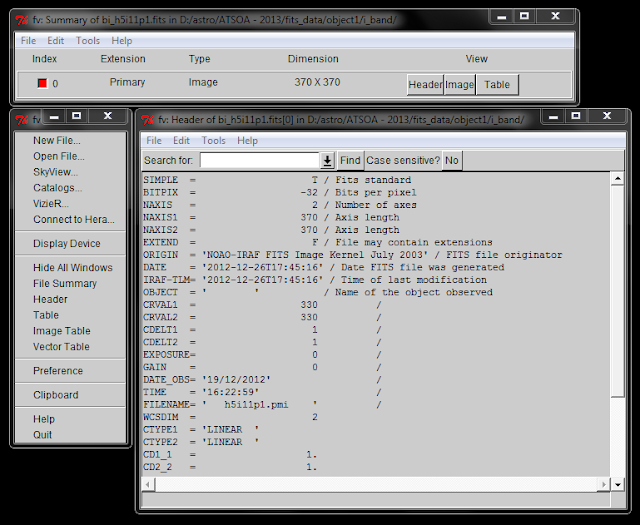Dissecting FITS files - The FITS extension & Astronomy

FITS is a very common extension used in astronomy. It stands for Flexible Image Transport System. Literally any image or spectrum produced by any observatory or telescope in this world (or orbiting this world) will eventually be converted from RAW CCD format into a FITS file! I still don't know how it caught on or what the advantages of the FITS extension are over the other types like .txt or .asc (ASCII) but hey, it's the convention and i'd (and any one interested in pursuing Astronomy seriously) should learn how to go about using FITS files i.e accessing them, understanding the data structure in a FITS file and performing operations on them. Astronomical data is usually pictures in one color. Yes. Only one color. Yes. Everything you know IS a lie. All of the colored pictures of nebulae, star forming regions, the galaxy and what not are actually false-color images where images of the same object observed at different wavelengths are clubbed together - stacked - to
